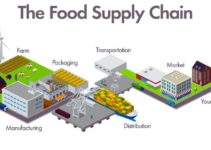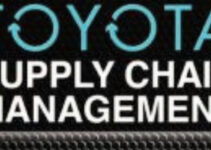Coca-Cola is a soda and soft drink manufacturing American multinational corporation. John Stitch Pemberton founded the cola drink company in 1886. Today, we’ll discuss the value chain analysis of Coca-Cola; and the primary and supporting activities involved in the process of value chain analysis. They’re inbound and outbound logistics, operations, marketing, and services; infrastructure, HRM, technological development, and procurement of soft drink Companies as an application of value chain analysis.
Substitutes of Coca-Cola
- Dr. Pepper Snapple
- Nestle
- Redbull
- Gatorade
- Mountain Dew
- Pepsi
- Parle
The value chain analysis of Coca-Cola would analyze the primary and supporting activities in the process of value chain analysis. They’re inbound and outbound logistics, operations, marketing, and services; infrastructure, HRM, technology, and procurement. Here’s Coca-Cola value chain analysis company example as follows;
Value Chain Analysis of Coca-Cola
Let’s discuss the primary and supporting activities involved in the process of value chain analysis of Coca-Cola. It is an application of value chain analysis based on Porter’s model; some of the key elements and components of value chain analysis are as follows;
Primary Activities of Coca-Cola
Some of the key elements and components involved in the primary activities of the Coca-Cola value chain analysis process are as follows;
Inbound Logistics of Coca-Cola
The inbound logistics focuses on the inward flow and receiving raw supplies and materials from the suppliers and vendors for the production of soft drinks. Coca-Cola deals with hundreds of suppliers and bottlers across the world to ensure the smooth supply of materials and supplies and decrease risk factors.
I-Material Sourcing
The main ingredient in the Coca-Cola’s soft drink is water. The company rarely faces any type of issue or problem in accessing the raw materials or water.
However, HFCS (high fructose corn syrup) is the other main ingredient and raw material that the company uses. The company procures it from US-based suppliers and vendors and receives it through trucks and other road transport.
II-International Sourcing
Coca-Cola needs to source and procure some ingredients and raw materials from international suppliers for its fresh juice drinks. For instance, the company sources the orange juice concentrate or the orange juice from Brazil, Southern Hemisphere, or Florida. The company employs inbound logistical channels like Trucks or Ships for international procurement. The focus of the soft drink company is to deal with diverse suppliers and vendors.
Outbound Logistics of Coca-Cola
I-Distribution Channels
Coca-Cola has established a very strong worldwide distribution network comprising over 200 countries across the world. The company employs various distribution controlled by the brand like; retailers, wholesalers, distributors, and bottling partners. For instance, the company employs manual distribution outbound logistics channels comprising over 2500 manual distribution businesses.
II-Bottling Partners
Some of the main independent bottling partners of the soft drink company in different geographical regions are as follows;
- Swire Beverages – Taiwan, Hong Kong, China, and 7 other provinces
- New CCE – Sweden, Norway, Netherlands, Monaco, Luxembourg, Great Britain, Continental France, Belgium
- Arca Continental – Northern Argentina, Ecuador, Mexico
- HBC AG Coca-Cola – Ukraine, Switzerland, Slovenia, Slovakia, Serbia, Russia, Romania, Ireland, Poland, Nigeria, Montenegro, Moldova, Lithuania, Latvia, Italy, Greece, Hungry, Macedonia, Estonia, Czech Republic, Cyprus, Croatia, Bulgaria, Bosnia, Belarus, Austria, Armenia
- FEMSA Coca-Cola – Philippines, Western Argentina, Venezuela, Panama, Nicaragua, Costa Rica, Colombia, Guatemala, Brazil, Mexico
Operations of Coca-Cola
I-Bottling Partners
From the legal and administrative point of view, Coca-Cola doesn’t conduct its operations solely. The company manufactures 3 elements (Syrup, beverage bases, and concentrate) for the bottling partners. However, the focus of Coca-Cola is to perform marketing and branding and maintain the ownership of the company. The role of bottling partners is producing, merchandising, packaging, and distributing the finished products to the end consumers and vendors.
II-Operational Divisions
Coca-Cola has segmented its operations into various divisions and they’re as follows;
- Corporate
- Bottling Investment
- Asia Pacific
- North America
- Latin America
- Europe
- Africa
- Eurasia
Marketing & Sales of Coca-Cola
I-Integration Marketing
Coca-Cola implements an integrated marketing strategy and it means running various marketing and advertisement campaigns at once like; PR, event, sales promotion, and advertising. Launching marketing and promotional campaigns on multiple fronts helps the company to increase its reach and sales.
II-Happy Association
Coca-Cola has established a brand image of a happy, joyful, and active lifestyle. The soft drink brand highlights these elements while promoting and advertising its products and drinks. However, the company offers a wide variety of drinks to satisfy the needs of multiple customers.
Services of Coca-Cola
I-Customer Service
Coca-Cola offers customer service in the form of chats and calls to the company’s agent or representative. The FAQs (frequently asked questions) section of the company’s web platforms covers wide areas of topics and common questions.
Supporting Activities of Coca-Cola
Some of the key elements and components involved in the supporting activities of the Coca-Cola value chain analysis process are as follows;
Infrastructure of Coca-Cola
Coca-Cola has established a strong organizational structure to successfully manage and run its operations. The company’s infrastructure focuses on planning, productivity, and efficiency. Along with growth and productivity, the company engages in green activities and offers healthy drink options to customers.
Human Resources Management of Coca-Cola
HRM is a highly significant area of Coca-Cola and it focuses on hiring, recruiting, training, and developing talent for organizational growth and productivity. In order to boost the morale and confidence level of employees, they offer rewards and compensations. It also provides career growth opportunities to the employees to earn their commitment and loyalty.
Technological Development of Coca-Cola
Coca-Cola invests a significant amount of capital resources in research and technological development. It focuses on sales, productivity, and distribution. In fact, the soft drink company has established 6 R&D centers by integrating with the following;
- University researchers
- Tech startups
- Partners
- External technology and assessment hubs
The soft drink brand coordinates with various partners to bring innovation in products, equipment, and packaging.
Procurement of Coca-Cola
Coca-Cola sources and procures water, raw supplies, and materials from local and international suppliers. The company deals with a diverse range of suppliers and partners to decrease the risk factor and ensure the smooth supply of raw ingredients.
Conclusion: Coca-Cola Value Chain Analysis Company Example |Application of Value Chain Analysis Process
After an in-depth study of the value chain analysis of Coca-Cola; we have realized that Coca-Cola is the world’s leading soft drink manufacturing brand. If you are learning about the Coca-Cola value chain analysis company example; then you should keep in mind the abovementioned primary and supporting activities involved in the process of value chain analysis. They’re inbound and outbound logistics, operations, marketing, and services; infrastructure, procurement, HRM, and technology as an application of value chain analysis.
Ahsan is an accomplished researcher and has a deep insight in worldly life affairs. He goes Live 3 days a week on various social media platforms. Other than research writing, he’s a very interesting person.


